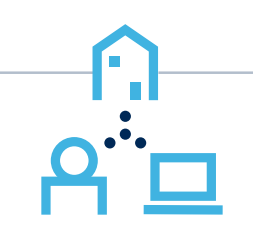By Austin Miller
Now that we’ve dealt with Engineering Trust and Sculpting Change, it’s time to turn out attention to the final section in Gartner’s Top Twelve – Accelerating Growth. It’s the nature of modern business; it’s not enough just to do a job well, everyone must be working together to increase the value of the organization and encourage growth.
Moving beyond the basic building blocks of business and becoming a growth accelerating asset isn’t difficult for cybersecurity professionals – as long as you ask a cybersecurity professional! The seemingly eternal battle for justifying the anti-adversarial budget means that people like you have almost certainly stared down a conversation with the C-level suite about how necessary (or rather, unnecessary) a necessary piece of your defensive arsenal is. If not, you’ll certainly have been affected by these decisions somewhere in your career.
As part of Accelerated Growth, we will examine how cybersecurity does promote and defend growth as well as how certain changes within the field will only increase this in the next few years.
Distributed Enterprise

This one is no stranger to professionals in cybersecurity – the pandemic brought many challenges for many people but opening up conventionally on-premises businesses (or, at best, businesses with limited hybrid set ups) has really added a lot to people’s job descriptions since January 2020. The move to distributed workplaces meant that cybersecurity experts were dealing with an environment that was completely different from what they had seen before.
Even though remote work wasn’t exactly unheard of, moving everyone into a distributed system meant that security systems had to completely change for some. For many smaller businesses, this included a perilous period of time when conventional network defenses had next to no power in protecting remote systems. Is this the future of cybersecurity?
How will distributed enterprises change cybersecurity?
Cybersecurity has undergone a major transformation in the last two years, with the wholescale change to distributed defenses in place of hard perimeters. Organizations must be ready to send out equipment and data to endpoints that are not within the castle walls of a secured network, something that many people have struggled with.
It’s no secret that cyberattacks have sharply rose throughout the COVID pandemic, showing that some conventional defenses were unable to cope with the sudden change. More organizations are now moving to Infrastructure-as-a-Service (IaaS) platforms in order to centralize their applications and other business needs, hopefully in an effort to cut out the weaknesses of relying on anti-malware/anti-malware programs and other critical cybersecurity software that is confined to the system itself.
With a shape increase in the number of organizations that are expected to move to a distributed architecture by the end of 2023, Gartner says that the brave pioneers going all in with this kind of organizational setup will realize up to 25% revenue growth ahead of centralized competitors.
Are distributed enterprises just about cybersecurity teams?
Obviously not – not only are non-security team members a part of the infrastructure that has gone to a distributed model, but customers have also become increasingly remote – the conventional shopfront has become emptier because people are preferring to shop online and hand over more and more data to (hopefully) secure web portals.
Because of this, a change is necessary in the way that databases are accessed and maintained. Some organizations have even turned to drone usage to support remote customers, but this brings its own minefield of issues for being rely on IoT devices!
What are the big concerns?
If you have worked with distributed systems before, you will know the standard problems. However, something that will only become even more of an issue is the reliance on Edge and IoT devices. As the SecPro has covered repeatedly, the state of cybersecurity for IoT devices is still in a particularly precarious situation – poor data management techniques mean that some pieces of hardware actually leak data that we would expect them to keep secure!
Cybersecurity professionals are at the forefront of this drive towards innovation. As businesses open themselves up to a more distributed organization and customer-friendly interactions, innovative security solutions will play a major role in stopping data leaks and ensuring overall security for the new age of enterprise organization.








